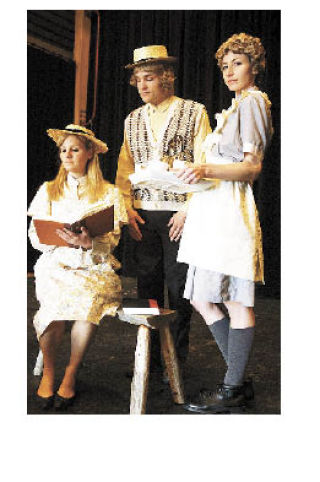The Weekly spoke with some of the actors in the upcoming Under Milk Wood play being performed at Lopez Center about why they participate in community theater and why they wanted to be in this particular play. Each of them plays more than one role.
“Bringing to life characters and emotions that might be unacceptable in my day-to-day is edge work for me,” says Terry Drahn. “I get to access those parts and be someone else and me at the same time. Dylan Thomas’s language, coupled with the Welsh accent, adds another dimension that pushes all of us.”
“I love theatre of all sorts,” says Rosie Sumner. “Creating a production is hard work, sometimes frustrating and irritating, but so very rewarding. The way a diverse group of people with different skill levels and interests comes together to create a piece of theater worth attending is always satisfying and surprising in every aspect: from the volunteers who come in to pound nails or set up the risers, to flashes of ideas that arise in rehearsal for making a costume change work. I love the process, even more than the product. It’s miraculous every time.
“I also love words and literature, and Dylan Thomas is all about words,” Sumner adds. “This piece is full of lyrical language and onomatopoetic twists that might have people scratching their heads but also getting strange original pictures in their minds. There’s a challenge in how to engage the audience while staging something originally written solely to be heard, not seen. I wanted to be part of that challenge.”
“I love the sound of Dylan Thomas’ words, and his writing for characters is so beautifully crafted and full of humor,” says Micki Ryan. “I read ‘‘Under Milk Wood’’ thirty years ago and remembered it as full of funny characters and rhythmic narrative passages. Reading it now, I was amused by the similarities between the fictional village and Lopez. Everyone in the entire community can enjoy this play, and no one should be surprised to see a little of themselves and their neighbors in these wonderful characters!”
“I love working with Carol Steckler,” Ryan adds, “and am flabbergasted by her ability and sensitivity to not only appreciate the playwright, but to take ordinary people from the grocery store, the library, the grade school, the farms, the construction sites—everywhere—and turn them into polished actors who can put on an engaging, lively, emotional performance.’’



